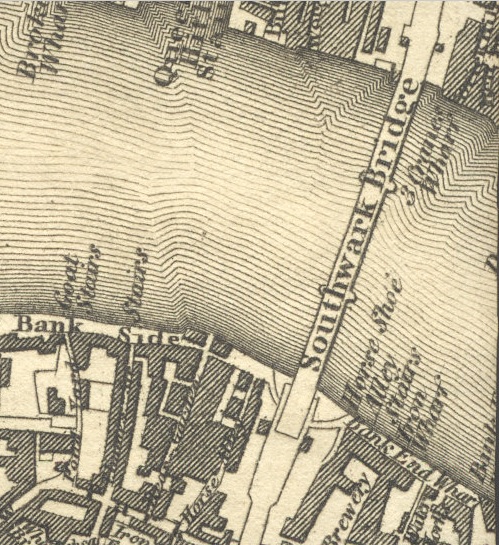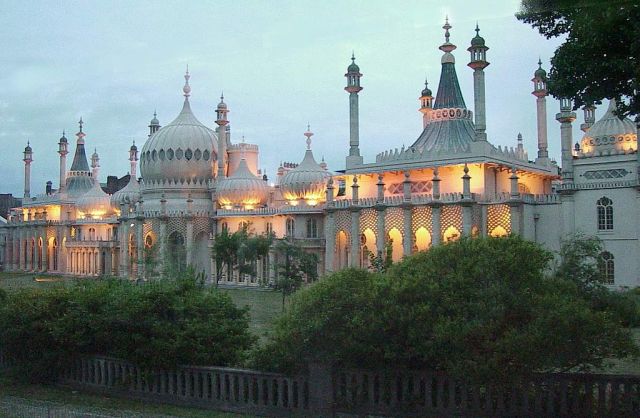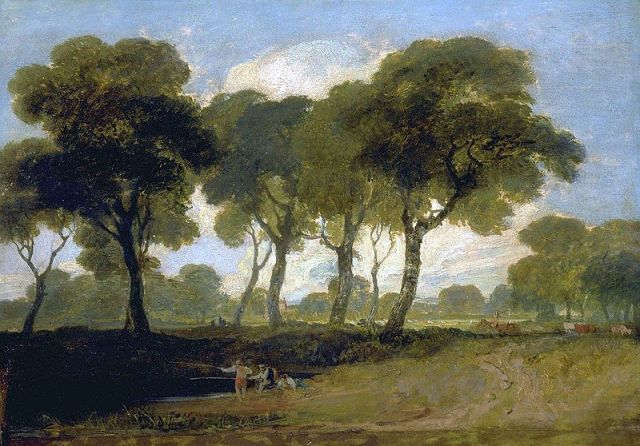
Joan Aiken’s Black Hearts in Battersea is, as well as a rip-roaring adventure story with vivid characters, a novel rich in sense of place, both real and imagined. In particular London features strongly (as it does in a couple of other Wolves Chronicles) so, with the help of Greenwood’s Map of London from an Actual Survey made in the Years 1825, 1825 and 1826, I shall be exploring Dido Twite’s London as it was in this alternate history in 1833, with other places to be detailed in another post. As well-known supermarket might say, I do the research so you don’t have to …
Southwark
The Southwark of the Wolves Chronicles is represented as a hotbed of Hanoverian plotters, whose conspiracy centred on the Twite household in Rose Alley (weapons referred to a pictclobbers were housed in the Twite basement). The 20th-century Bankside Power Station, now Tate Modern, is a suitable symbol of the power the Hanoverians wanted to wield, contrasting with Battersea Power Station which could stand for the prevailing power of the Stuarts (the reigning monarchs in this alternate history).
Southwark Bridge
The modern bridge is over a century old now — it was opened in 1912 to replace the one built in 1819, which Simon must have crossed to find the lodgings of his friend Dr Gabriel Field — and is one of several 19th-century crossings to join the north and south banks of the Thames.
Rose Alley
This tiny cobbled lane “giving directly onto the river-front” is approached from Southwark Bridge “round a couple of corners” (via Park Street) and consists of “half a dozen tall, narrow, shabby houses on either side” with, at the far end, “a patch of thistly grass” sloping down to the Thames. The Twites live at the last house on the right, numbered 8. From a top floor window there is a view of the Thames and St Paul’s Cathedral.
In the 1827 edition of Christopher Greenwood’s map this lane is called Horse Alley; it was corrected to Rose Alley in the 1830 edition. The name of the lane is a reminder that the Rose Theatre stood hereabouts, on the junction of Rose Alley and Park Street (then Maiden Lane), as John Norden’s 1593 map shows. Nearby stood ‘The Beare Howse’, also known as The Bear Garden and Davies Amphitheatre, where what Samuel Pepys called the “very rude and nasty pleasure” of bear-baiting took place, as well as boxing, spectaculars and plays. Running parallel to Rose Alley, Bear Gardens still commemorates this ‘sport’ in the street name some four centuries after its heyday.

Battersea and Chelsea
Battersea, across the river from Chelsea, is the site of Battersea Castle, London residence of the Dukes of Battersea, built by the 4th Duke as a wedding-present for his wife. Southeast of Chelsea Bridge is Battersea Park — in truth not opened as a park until 1858 on what were Battersea Fields — and plonked in the grounds is the Castle. From the description (pink granite, enclosing a smaller, older building, looking like “a great half-open rose” and surrounded by beds of pink, crimson and scarlet flowers) it is rather striking: Pat Marriott’s illustration for Black Hearts in fact suggests a mosque-like dome surrounded by walls and minarets. Perhaps we are to imagine something halfway between the Brighton Pavilion (built by the Prince Regent for liaisons with his mistress) and the Taj Mahal (built by Shah Jahan to house his wife’s tomb).

A tunnel under Chelsea Bridge provides access for services (and later for ‘pictclobber’ to blow up the King on his annual Christmas visit to Battersea Castle). The main entrance is up “a tremendous flight of curving steps”. The Palace’s main feature is the library filled with pictures. Reached through “a lofty hall, up another flight of stairs, and across a great black-and-white tiled anteroom,” it is at least a hundred yards long. A large canvas depicting a hunting scene adorns most of an end wall; a tapestry is being embroidered by the Duchess which could fill another wall. The park grounds are capable of accommodating an air-balloon and its gondola, should one ever arrive.

Chelsea Bridge
A bridge connecting Battersea and Chelsea would be another anachronism — the original didn’t open until 1857 — but we must envisage one in Dido’s world. (It will run from around Chelsea Water Works on the north bank to the Red House Tea Gardens on the south, a sometime den of vice.) The author doesn’t mention whether it is a suspension bridge or not. The famous Thames embankments weren’t built until 1875.

Rivière Academy of Art
Founded by Marius Rivière (1759-1819) the academy is housed near the river in a Neoclassical building made a little less imposing by the clothes-lines suspended between the columns and washing in and around the marble fountain in front of the Academy. The entrance hall features a statue of the founder in the middle of a large double flight of marble stairs — at the top of these stairs in the Principal’s office. (The author possibly based the Academy on the Royal Hospital Chelsea which has a late 17th-century neoclassical façade and was built on the site of the incomplete Chelsey College.) Artists’ requirements are met by Bonnetiers in the nearby King’s Road.
Cobb’s Coaches
Close by Rivière’s Academy is a carriage-works. Inside big double gates, surmounted by the legend ‘Cobb’s Coaches’ in gold is “a wide yard containing every conceivable kind of coach, carriage, phaeton … in every imaginable state of disrepair.” At the side a forge has been set up.

Other places of interest
Clapham Common (just south of Battersea) is where Simon, Dido and Justin go to the fair sometime in November 1833. The booths include a Shooting Gallery, Imperial Theatre with Panoramas from History, a Fat Lady, Shake-Charmer, Living Skeleton, Mermaid, Flying-Boats, Wise Pig, Drury Lane Drama, Swan-Boats, Whirligigs, Barney’s Restaurant, a giddy-go-round, Punch and Judy, a Fire-Breathing Dragon, singers, puppets, an arcade, a fortune-teller and a Spectacular Pyrotechnical Display.

Hyde Park
Wolves are seen here before Christmas Eve 1833 as the Duke’s balloon sails over on its way south to Battersea.
Bow Street
The Bow Street Runners rush from their Covent Garden headquarters to Battersea to sort out the Hanoverian plotters, a little too late as it happens.
Deptford
Located off the map to the east, Deptford is where Simon is taken by Eustace Buckle after being shanghaied in Rose Alley, before being stuffed in the hold of the Dark Dew. Here he is nursed by Dido and Justin after they have stolen aboard, unaware they are en route to the North Sea.
* * * * *
As you can see Joan Aiken’s storytelling is made more vivid and intense by her inclusion of so much background detail which her characters can inhabit. But Black Hearts in Battersea is not just about London, and in a companion post I intend to discuss the other areas that she introduces into her plot — in Yorkshire and in the North Sea — and we shall find that things are rather less straightforward.

Fantastic post. As you say, you did the research so I/we needn’t. I think that “Blackhearts” is possibly my favourite book in the “Wolves” series. Your post will surely entice people to read it.
LikeLiked by 1 person
Thanks so much, Dale. 🙂 I think that BHB is even better than WWC, good though that was, and am now slightly anxious about Nightbirds not being up the fond memories I have of it. The amount of notes I took about it suggests perhaps I’m worrying too much …
Anyway, I too hope this (and my other Aiken-inspired posts) will encourage new readers or those who’ve only got as far as WWC to follow through!
LikeLiked by 1 person
Somehow, I don’t think a year-end-forthcoming London visit of two days will get us very far with seeing those sights. And I am Aiken to sample Joan again …
Turner really had something.
LikeLiked by 1 person
Just as well then that you’re not planning a visit to Yorkshire to see Willoughby Chase House, Chippings Castle and the town of Blastburn as you’d be sorely disappointed they don’t appear on any A to Z …
Turner? What with all those landscapes he must have had a massive discount on green paint. Just saying.
LikeLike
Probably find all sorts of even more interesting places while looking – England is like that.
So much more pleasant than portraits of uggerley people, though!
LikeLiked by 1 person